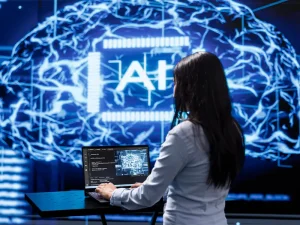The most common mistakes in web design and how to avoid them
Welcome to the digital age, where having a solid online presence is crucial for any business’s success. In this fast-paced world, your website serves as the face of your company, making it essential to get web design right. However, even the most well-intentioned businesses can fall into common pitfalls that hinder their online growth and impact their bottom line. Fear not! In this blog post, we will explore the most common mistakes in web design and provide valuable insights on avoiding them. So please grab a cup of coffee, and let’s dive into the fascinating world of website design!
Lack of Mobile-Friendliness
In today’s mobile-dominated world, paying attention to the importance of mobile-friendliness can be a huge mistake for your website. With more than half of all internet traffic coming from mobile devices, ensuring your site delivers an optimal experience across different screen sizes is vital.
When a website needs mobile-friendliness, it becomes frustrating for users to navigate and interact with it on their smartphones or tablets. Text may appear too small to read, buttons may be difficult to tap accurately, and images might not resize properly – causing a jumbled mess on smaller screens.
Not only does this leave visitors feeling frustrated and likely to abandon your site in search of a competitor who offers better usability on mobile devices, but it also has negative consequences for search engine optimization (SEO). Search engines like Google prioritize websites that are responsive and easily accessible on mobile devices when determining search rankings.
To avoid this mistake, make sure your web design is responsive. It means you should use fluid grids and flexible layouts that automatically adjust the content depending on the device used. Additionally, test your website thoroughly across various devices and screen sizes to ensure consistent user experience regardless of the platform they use to access your site.
Remember: If you want to stay ahead in the digital landscape, embracing mobile-friendliness is no longer an option – it’s necessary!
Slow Loading Speed
Slow loading speed is one of the most common mistakes in web design that can significantly impact a website’s success. Users expect instant access to the content they want when they click on a link. If a website takes less time to load, visitors will likely get frustrated and abandon it.
Several factors contribute to slow loading speeds. One common issue is large file sizes, such as high-resolution images or videos, that must be appropriately optimized for the web. These files can take longer to download, resulting in slower page load times.
Another culprit is the excessive use of plugins or scripts that add functionality to a website but also increase its complexity and slow down performance. Evaluating and streamlining these elements is crucial to ensure efficient loading speed.
Additionally, inadequate hosting services or server configurations can also cause delays in loading times. Choosing a reliable hosting provider with good server infrastructure is essential for fast-loading websites.
To avoid this mistake:
- Optimize your images and other media files before uploading them onto your site.
- Minimize unnecessary plugins or scripts, only keeping those essential for your site’s functionality.
- Invest in quality hosting services that prioritize fast loading speeds.
Remember, first impressions matter online – don’t let slow loading speeds deter potential visitors from engaging with your business!
Not Optimized for Search Engines
One of the most common mistakes in web design is failing to optimize the website for search engines. When a website isn’t optimized, it becomes difficult for search engines to understand its purpose and relevance. As a result, your website may need to rank better in search engine results pages (SERPs), making it harder for potential customers to find you.
To avoid this mistake:
- Start by conducting keyword research.
- Identify the keywords your target audience uses to search for businesses like yours.
- Incorporate these keywords strategically throughout your website’s content, including page titles, headings, meta tags, and image alt texts.
Another important aspect of optimization is creating unique and compelling meta descriptions for each page on your site. These snippets appear in SERPs and can significantly influence whether someone clicks on your site.
Additionally, ensure your website has clean code that meets current SEO standards. It should include a proper header structure (H1s, H2s), descriptive URLs with relevant keywords, and fast loading times.
Last but not least, remember internal linking! Linking relevant pages within your site helps users and search engine crawlers navigate your content easily.
By optimizing your website for search engines effectively, you increase its visibility online and improve organic traffic flow – a crucial aspect of any successful online business strategy!
Poor User Experience
User experience is a critical aspect of web design. It refers to how users interact with and perceive a website. A poor user experience can drive visitors away, resulting in lost opportunities for your business.
One common mistake that leads to a poor user experience is cluttered and confusing navigation. If users can’t easily find what they’re looking for, they will likely leave your site frustrated. Keep the navigation simple and intuitive, using clear labels and logical organization.
Another area for improvement is slow loading times. Users expect websites to load quickly; otherwise, they may abandon it altogether. Optimize images and minimize server requests to improve loading speed.
Pop-ups are another culprit when it comes to frustrating users. While pop-ups can effectively capture leads or promote offers, too many or poorly timed pop-ups can annoy visitors and disrupt their browsing experience.
The lack of responsive design is also detrimental to the user experience on mobile devices. With more people accessing websites through smartphones and tablets, your site must adapt seamlessly across different screen sizes.
Excessive ads or intrusive elements can detract from the overall user experience by distracting or overwhelming visitors.
To avoid these mistakes, put yourself in the shoes of your target audience; test your website on various devices, simplify navigation, optimize loading speed, limit pop-ups, use responsive design techniques, and strike a balance between ads/promotions and content quality.
Remember that providing an exceptional user experience will keep visitors engaged and increase the likelihood of conversions for your business.
Unattractive Design
When it comes to web design, aesthetics plays a crucial role. An unattractive design can be a major turnoff for visitors and leave them questioning the professionalism of your business. A common mistake in web design is using too many colors, fonts, and clashing graphics, causing your website to look chaotic and unappealing.
Another mistake is not paying attention to the layout and spacing of elements on your website. Crowding too much content or images onto a single page can overwhelm visitors and make navigating your site easier. On the flip side, having too much white space can also give off an unfinished or empty feeling.
Using outdated or generic stock photos is another pitfall to avoid when designing your website. These images must be more original and create a strong brand identity for your business. Instead, opt for high-quality custom visuals that are relevant to your industry.
Furthermore, paying attention to the importance of responsive design can significantly impact user experience. If your website adapts well to different screen sizes or devices, visitors may become more satisfied trying to view content or complete actions on their mobile phones or tablets.
To avoid these mistakes in web design, start by conducting thorough research on current trends and best practices in website aesthetics. Keep things simple yet visually appealing by using a limited color palette and cohesive fonts throughout your site’s pages.
Pay close attention to spacing between text blocks, images, buttons, etc., ensuring enough breathing room for easy readability.
Invest time in creating custom visuals that accurately represent your brand personality while avoiding cliché stock imagery.
Lastly, ensure that all design aspects are optimized for various devices. Hence, users have seamless access regardless of browsing from a desktop computer or smartphone screen.
By focusing on attractive, visually pleasing, yet functional designs across different platforms, you’ll increase engagement with potential customers, ultimately increasing conversions.
How to Avoid These Mistakes
To sum it up, avoiding common mistakes in web design is crucial for the success of your business. By considering factors like mobile-friendliness, loading speed, search engine optimization, user experience, and attractive design, you can create a website that looks great, drives traffic, and converts visitors into customers.
Here are some critical tips on how to avoid these mistakes:
1. Embrace mobile-friendly design: Ensure your website is responsive and displays correctly on different devices. Test its functionality on smartphones and tablets to provide a seamless user experience for all users.
2. Optimize loading speed: Compress images, minify code, and leverage caching techniques to improve your website’s performance. A faster-loading site enhances user satisfaction and reduces bounce rates.
3. Implement SEO best practices: Conduct keyword research to understand what terms potential customers search for related to your business. Incorporate these keywords into your website’s content and meta tags to enhance visibility in search engine results pages.
4. Prioritize user experience: Make navigation intuitive by organizing content logically with clear menus and headings. Use whitespace effectively to give elements room to breathe, making it easier for users to absorb information.
5. Design an attractive interface: Choose visually appealing colors, fonts, layouts, and imagery that align with your brand identity while maintaining readability across different screen sizes.
Remember that designing a successful website is an ongoing process. Regularly analyze metrics such as bounce rate or time spent on the page using tools such as Google Analytics. Adjustments based on the collected data will help further optimize the results.
By avoiding these common mistakes in web design through careful planning and implementing the best practices discussed above, you can ensure that your business has a robust online presence—one that attracts visitors, differentiates you from competitors, and ultimately helps drive growth!







